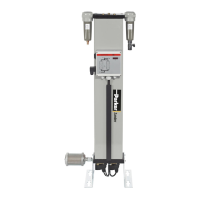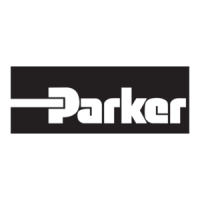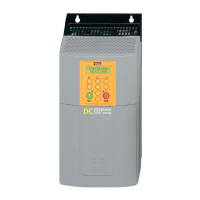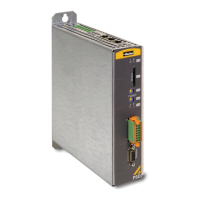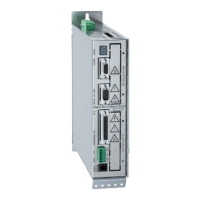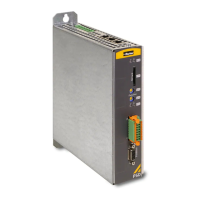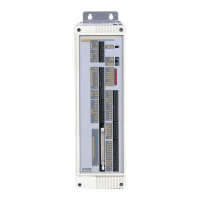14 - PVD 3674_GB_K Series_CE-November 2016.Docx
Voltage and maximum speed: The bus voltage and maximum speed will
approximately determine the required voltage constant (Ke).
Note that in many windings, the max mechanical speed limits the top speed.
Example:
Kit : K178050-EY
Power supply : 240Vac
Bus voltage : Ubus=324 Vdc
Voltage drop from drive : 7%
Motor voltage Lead to Lead : (Ubus/2)*(1-0.07)=213 Vrms
Voltage constant : Ke=75.85 Vrms/krpm
Theoretical Maximum speed : Nmax = (213/75.85)*1000 = ~2800 rpm
Current and torque: The maximum load and acceleration will determine the current
required, determined by the torque constant K
t(sine)
Example:
Assume a requirement of 0.36 Nm.
If a Kit with a particular winding having Kt=0.176 Nm/Arms is chosen,
it will now require a current of 0.36/0.176=2 Arms.
Note: K
E
and K
t
are directly proportional to each other. Increasing K
E
will also increase
K
t
; decreasing K
E
will also decrease K
t
. The result is that as the voltage requirement
changes, the current requirement changes inversely.
Current and voltage from torque and speed:
The required speed and torque will determine the required voltage on the motor leads
due to the polarity, Kt, Ke, Inductance and resistance.
Example:
Kit : K178050-EY
Required speed S : 2476 rpm
Required speed S in rad/s = 2476 x 2/60 = 259 rad/s
Required torque T : 5.35 N.m
Motor Ke phase to phase : 75.85 V/Krpm phase to phase
Motor Ke phase to neutral = 75.85/3 = 43.792 V/Krpm phase to neutral
Motor torque constant Kt : 1.2548 N.m/amp
Motor resistance r phase to phase : 2.5252 ohms
Motor resistance r phase to neutral = 2.5252/2 = 1.26 ohms
Motor inductance L phase to phase : 9.5593 mH
Motor inductance L phase to neutral = 9.5593 /2 = 4.78 mH
Number of pair of poles p : 9
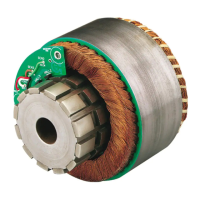
